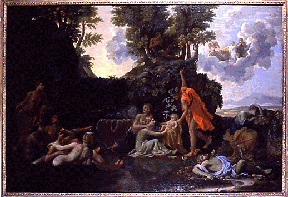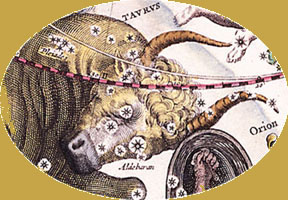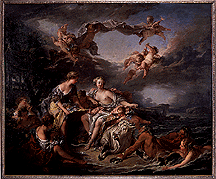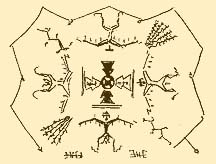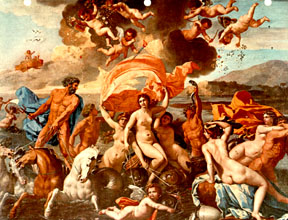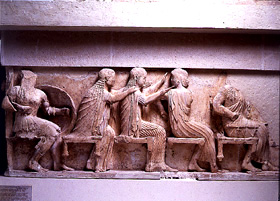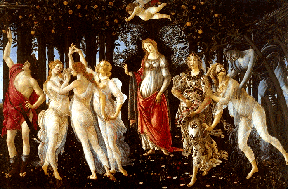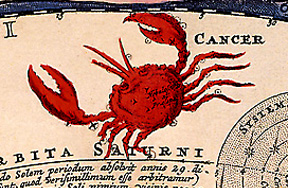Nicolas Poussin: "The Infant Bacchus Entrusted to the Nymphs of Nysa; The Death of Echo and Narcissus" (1657). The painting shows Mercury (in Greek, Hermes) delivering the newly born baby Bacchus (in Greek, Dionysus) to the nymphs of Nysa. The Hyades were also called the nymphs of Nysa because they lived on Mount Nysa.
Click on image for full size
Image courtesy of the Fogg Art Museum. Gift of Mrs. Samuel Sachs in memory of Mr. Samuel Sachs. To be reproduced only by permission of the Harvard University Art Museums. (c) President and Fellows of Harvard College, Harvard University Art Museums.
Click on image for full size
Image courtesy of the Fogg Art Museum. Gift of Mrs. Samuel Sachs in memory of Mr. Samuel Sachs. To be reproduced only by permission of the Harvard University Art Museums. (c) President and Fellows of Harvard College, Harvard University Art Museums.
Hyades
For the ancient Greeks, the Hyades were daughters of Pleione and Atlas, a giant who carried the heavens on his shoulders. The Hyades had several sisters, such as the Pleiades and the Hesperides. They were very attached to their brother HyasOne day, while Hyas was hunting, he was killed by a lion. The Hyades were so upset that they died of grief.
Zeus was grateful to them because they nursed his son the god Dionysus.
Zeus changed the Hyades into a
cluster of stars and placed them in the constellation of Taurus the Bull.


